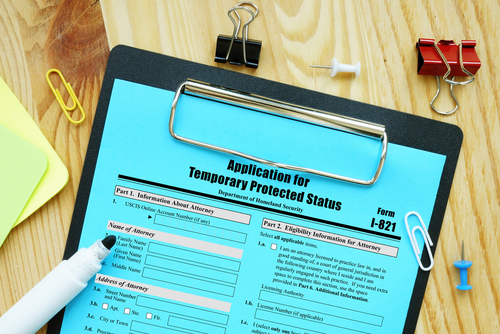After reports of human rights abuse inside El Salvador of people deported from the U.S., Congressman Joe Moakley introduced legislation in 1983 to halt deportations to countries facing humanitarian crises. This effort led to creating the Temporary Protected Status (TPS) in 1990, with El Salvador being the first designated country. Now that we’ve explored the history behind TPS, let’s dive deeper into this legal protection to see if it could be a potential path forward in your immigration journey.
What is a Temporary Protected Status?
The Secretary of the Department of Homeland Security (DHS) grants Temporary Protected Status to eligible immigrants who are unable to return to their home country safely due to conditions preventing their country from adequately handling the return. These conditions include ongoing armed conflict, natural disasters, or other extraordinary circumstances.
What are the eligibility requirements?
To qualify for Temporary Protected Status, you must:
- Be a national of the foreign country with a TPS designation (or if stateless, have last resided in a country with a TPS designation);
- Have continuously physically present in the U.S. since the effective date of designation;
- Have continuously resided in the U.S since a date specified by the Secretary of Homeland Security; and
- Not be inadmissible to the U.S. or be barred from asylum for certain criminal or national security-related reasons, such as if you have been convicted of a felony or two or more misdemeanors.
If you’re a national of a designated country, you do not automatically receive TPS. You must register during the specified period and pay the required fees. Additionally, your immigration status at the time of application or a prior removal order does not impact your eligibility.
What’s the application process and associated fees to expect?
Start the application process by completing the TPS application online. After USCIS receives your application, they may contact you if they need to collect further information. If you receive a request for further information, we recommend you respond promptly. Once you submit all the information, USCIS will respond to your application with a decision.
The typical USCIS fee for a TPS application is $50, plus $30 for the biometric services fee (fingerprinting, photo, and background check).
Do I need a lawyer to apply for Temporary Protected Status?
Immigration applications can be complex, and mistakes can be costly. While some applications are easy to complete without legal assistance, we recommend that if you’re interested in TPS, you consult an immigration attorney for help. TPS designations and dates can be confusing, and professional guidance can help ensure accuracy and prevent errors.
How long does TPS last for?
A TPS designation can be granted for 6, 12, or 18 months at a time. The Secretary of the Department of Homeland Security must decide whether to extend or terminate the designation based on the conditions in the foreign country, with a decision required at least 60 days before the current designation expires.
All decisions to initiate, extend, or terminate a TPS designation are published in the Federal Register. If no decision is published at least 60 days before expiration, the designation is automatically extended for six months. While TPS is intended to be temporary, the law does not specify a limit on how long a country can maintain this designation.
Can I apply for a permanent resident status or citizenship with a Temporary Protected Status?
TPS alone does not provide you with a separate path to lawful permanent residence (a green card) or citizenship. However, if you receive a Temporary Protected Status and are eligible for permanent residence through a family member, employment, or humanitarian pathways, you may apply for that status.
Can I travel internationally with TPS?
With TPS, you can only travel with an approved travel authorization. This separate process, called Advance Parole, requires an additional application and filing fee.
If you’re considering applying for Temporary Protected Status (TPS), it’s important to remember that this designation is temporary and can end at any time. We encourage you to stay informed about any changes to your designations for your country of origin and consult with a legal professional if you’d like to explore eligibility for a more permanent immigration benefit.
We know that each immigration case is unique. Please don’t hesitate to contact us with any questions you may have. We’re here to support your immigration needs.

